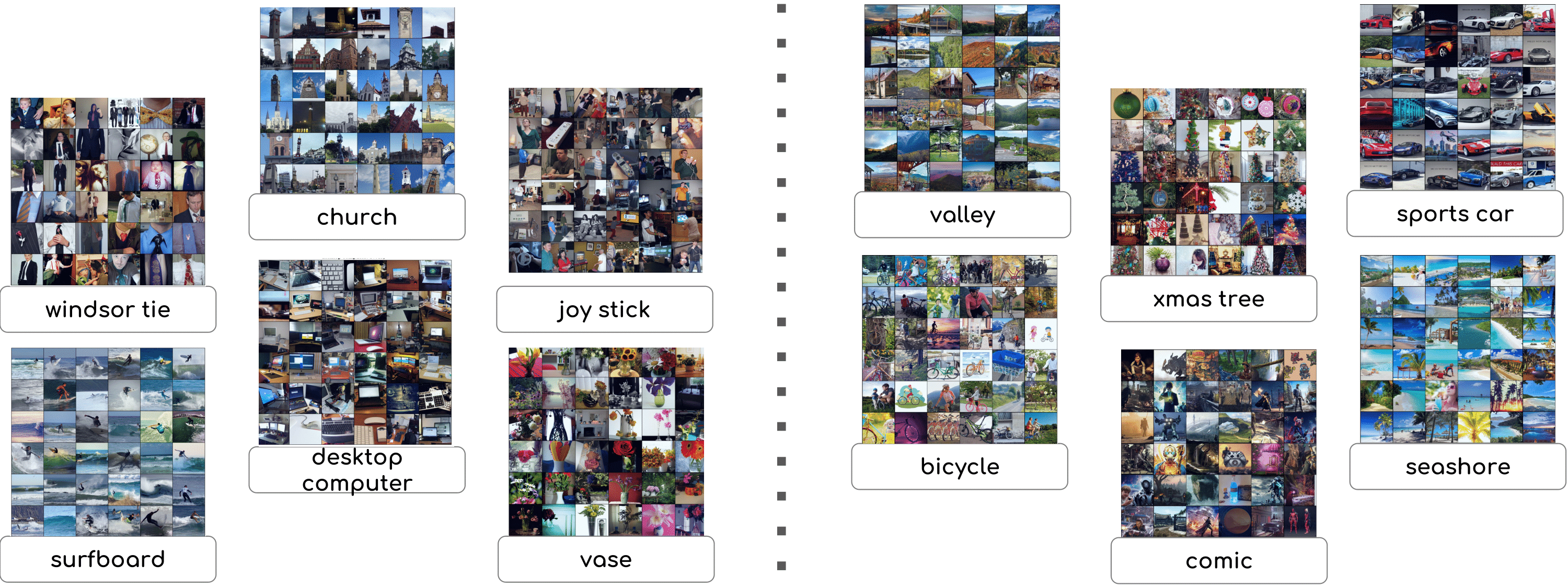by Tianzhe Chu*, Shengbang Tong*, Tianjiao Ding*, Xili Dai, Benjamin David Haeffele, Rene Vidal, Yi Ma (* means equal contribution)
This repo is the official implementation for the paper "Image Clustering via the Principle of Rate Reduction in the Age of Pretrained Models". This paper proposes a novel image clustering pipeline that integrates pre-trained models and rate reduction, enhancing clustering accuracy and introducing an effective self-labeling algorithm for unlabeled datasets at scale.
(2023.6 Version 0) Version 0 finished, currently support training for CIFAR and ImageNet; Optimal Number of Clusters Measurement; Self-labeling. What to Expect in Next Steps: Pretrained checkpoints
We adopt the pretrained CLIP model from OpenAI's official repository https://github.com/openai/CLIP. To install all the dependencies, run the following command:
git clone https://github.com/LeslieTrue/CPP.git
conda create -n CPP python==3.9
cd CPP
conda activate CPP
pip install git+https://github.com/openai/CLIP.git
pip install -r requirements.txtSince we use CLIP's image encoder as a frozen backbone, there are two ways to define the networks: i. with backbone inside; ii. without the backbone; which correspond to the following ways of dataset initialization respectively.
It's a regular procedure to train a CPP model using datasets with RGB images when defining the network with backbone inside.
To reduce the inference time of frozen pretrained networks, we suggest to preprocess the dataset using CLIP's image encoder and train a CPPNet using a network without the backbone.
python main.py --data_dir ./data --bs 1024 --desc train_CPP_CIFAR10\
--lr 1e-4 --lr_c 1e-4 --pieta 0.175 --epo 15 --hidden_dim 4096 --z_dim 128 --warmup 50Step1: Preprocess the data
python ./data/preprocess.py --data imagenet --path ./data --feature_dir ./imagenet-feature.ptStep2: Training
python main_efficient.py --data_dir imagenet-feature.pt --bs 1024 --desc train_CPP_imagenet\
--lr 1e-4 --lr_c 1e-4 --pieta 0.12 --epo 20 --hidden_dim 2048 --z_dim 1024 --warmup 2000 --n_clusters 1000python optimalcluster.py
python labeling.pyIf you find the repo useful or interesting, plz give a star~~ :D
@article{chu2023image,
title={Image Clustering via the Principle of Rate Reduction in the Age of Pretrained Models},
author={Chu, Tianzhe and Tong, Shengbang and Ding, Tianjiao and Dai, Xili and Haeffele, Benjamin David and Vidal, Rene and Ma, Yi},
journal={arXiv preprint arXiv:2306.05272},
year={2023}
}
